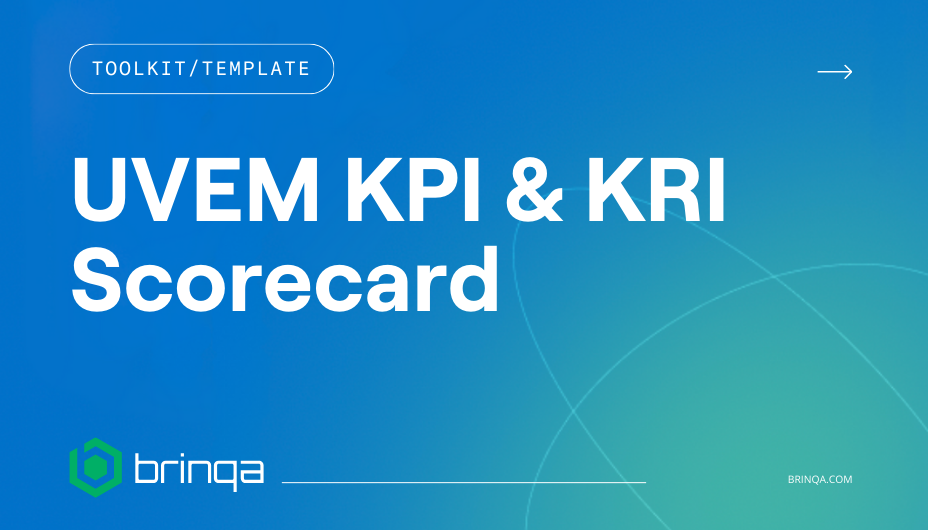Beyond the Numbers: How CISOs Should Measure True Security Effectiveness for the Board
by Jay Klauser, SVP of SE//7 min read/

As a CISO, you're constantly balancing the need to protect your organization with the responsibility of proving value and justifying resource allocation. Meeting Service Level Agreement (SLA) requirements and other key metrics for your security program is a critical component of this, but measuring effectiveness goes far beyond simply tallying a reduction in vulnerabilities or exposures. While these numbers can be in the thousands or hundreds of thousands, a mere decrease in overall count doesn't paint a comprehensive picture of true risk reduction for your Board of Directors.
So, what should be measured and reported on? The focus needs to shift to the effectiveness of your current security posture – a holistic view of how your tools, people, and data converge to illustrate a demonstrable decrease in risk over time. This approach not only provides the Board with a meaningful understanding of your security program's impact but also empowers you to influence leadership for increased security spending and resources, assuring them that current investments are being deployed wisely.
What Data Can CISOs Trust When Reporting to the Board?
Security leaders face a fundamental challenge: determining which data can be trusted. We operate in an ecosystem saturated with security tools, vast amounts of data, continuous threat intelligence enrichment, and a myriad of dashboards.
This abundance raises critical questions: Which data can you truly trust? What metrics should you present? How do you establish a single source of truth when multiple lines of business and departments each possess their own "sources of truth"?
Why Exposure Management Is the Next Step Beyond Vulnerability Management
Traditional vulnerability management focuses on identifying and patching weaknesses. While necessary, this approach lacks the context needed for strategic decision-making.
Exposure management, on the other hand, provides a holistic view of risk. It systematically:
- Collects, deduplicates, and normalizes data from every source
- Maps exposures to assets, owners, and business impact
- Enriches vulnerabilities with business relevance
This last point is crucial. All this data must be enriched with business relevance to provide CISOs with a true, contextualized picture of your organization's risk landscape – one that is explainable, defensible, and aligned with business objectives.
How CISOs Can Measure What Really Matters for Security Effectiveness
Once this enriched data is in hand, the real work of meaningful measurement begins. Many security platforms offer seemingly convenient, out-of-the-box metrics and ratings. But these generic scores often fail to reflect an organization’s actual risk posture. To show meaningful progress, CISOs must measure what matters most to their business.
An effective exposure management platform should empower you to:
- Customize SLAs: Create and configure the precise inputs that define and measure what matters most to your business.
- Board-ready dashboards: Track the creation and due dates of critical tickets, rolling them up into a comprehensive dashboard.
- Flexible reporting: Measure the SLAs most pertinent to your Board, easily generated to present a high-level view.
Key reporting elements should highlight:
- Risk indicators and circulating trends
- A detailed breakdown of findings
- Clear insights into SLA adherence
- A thorough remediation overview
By transforming this abundance of data into a clear and tailored view, you'll gain a granular understanding of what is being remediated and what isn't, as well as which teams are performing well and which require additional support. This level of flexibility and customization, allowing you to visualize data precisely how you want, is paramount for easily sharing insights with the Board.
Conclusion
By embracing this more sophisticated approach to measuring and reporting, CISOs can move beyond presenting abstract numbers and instead offer a compelling narrative of continuous risk reduction, directly linking security efforts to the organization's strategic objectives and fostering a more informed and supportive leadership team.
This shift transforms board reporting from static numbers to a meaningful story of continuous risk reduction, giving leadership the clarity they need to confidently support security priorities.
Is turning data into board-level insight a priority for you and your team? Speak with a Brinqa expert to see elevated Board reporting in action.
Ready to focus on the metrics that matter most? Download our customizable UVEM KPI and KRI Scorecard.

FAQs
What should CISOs measure when reporting security effectiveness to the board?
CISOs should go beyond vulnerability counts and focus on risk reduction, SLA adherence, exposure management, and contextualized metrics that align with business priorities.
What is the difference between vulnerability management and exposure management?
Vulnerability management focuses on identifying and patching weaknesses, while exposure management provides a holistic view of organizational risk by consolidating, normalizing, and enriching data with business context.
Why is trustworthy data critical for security reporting?
Without a single, trusted source of truth, CISOs risk presenting fragmented or misleading insights. Trustworthy, normalized, and business-aligned data ensures accurate risk communication.
How can CISOs customize security metrics for their organization?
Through exposure management platforms that allow customization of SLAs, dashboards, and reports – enabling alignment with the organization’s unique goals and board expectations.
How does exposure management help CISOs gain board support for resources?
By linking security investments to demonstrable, measurable reductions in risk, CISOs can clearly show the value of resources and influence leadership to allocate additional budget.


